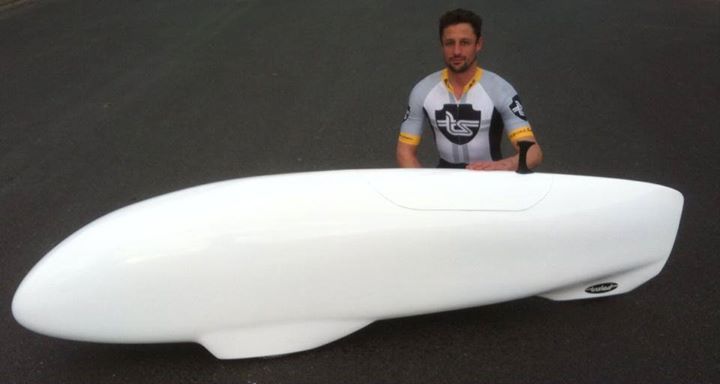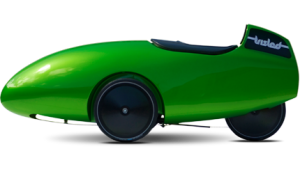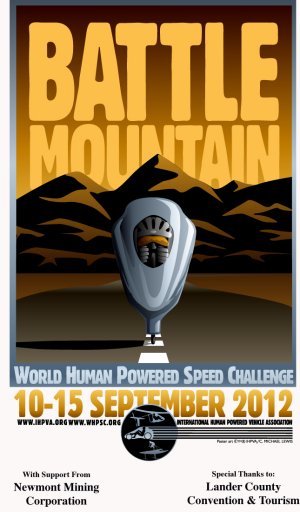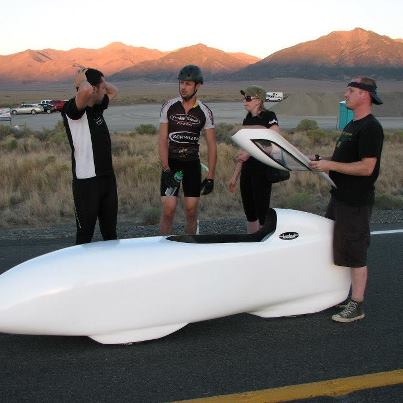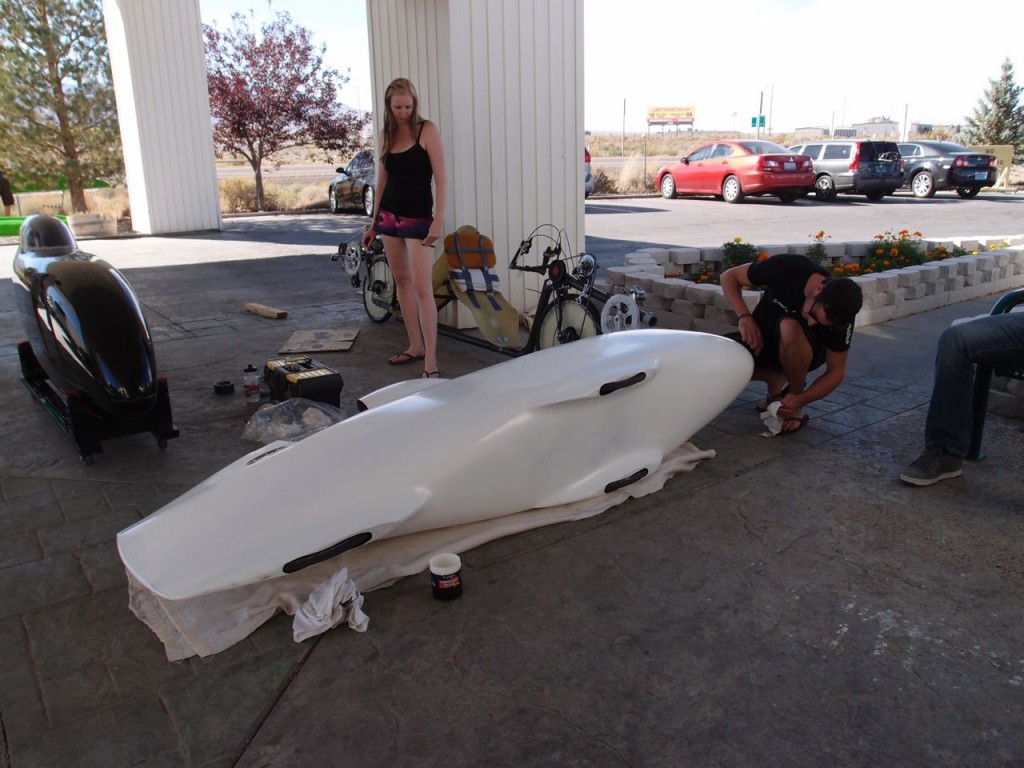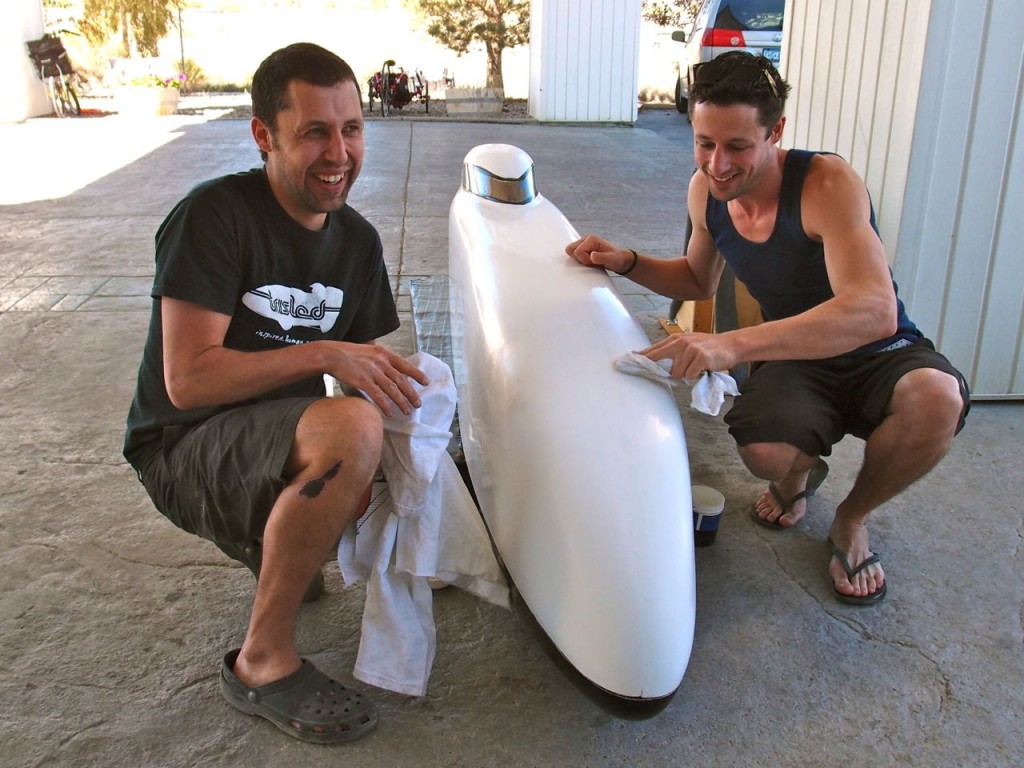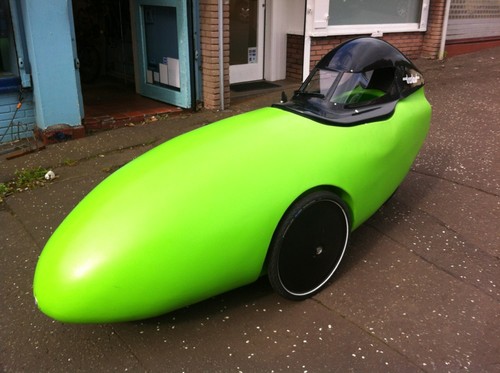In typical Ozzy style Trisled performed the following good humoured stunt to effectively demonstrate the durability of their robust and practical Rotovelo velomobile. Perhaps the beginnings of a new sport – Velomobile Ice Hockey.
The video clip was produced and edited by Lochlan Gay, a Year 11 student from Mt Eliza Secondary College. Working with six cameramen across 26 cameras, Lochie was then charged with poring over 20 hours of footage to produce the final five minute cut.
The players are evidently enjoying themselves immensely, and the resilience of the roto-moulded shell to the repeated impacts is clear. As one commentator has remarked, “don’t try this in your Quest.” Perhaps not so obvious is the clear stability of the trike compared to a bike in icy conditions. Another feather in the velomobiles all-weather cap.
The opposite extreme to Trisled’s practical velomobile are the high end racing machines that they produce for Australia’s flourishing sport of HPV racing (See the Australian HPV Super Series Pedal Prix and RACV Energy Breakthrough pages). Trisled took these machines a step further in 2012, when they entered one bike and one trike, in the World Human Powered Speed Challenge at Battle Mountain. The Trisled machines performed well with the trike, with Gareth Hanks in Completely Overzealous, setting a new world record in the three wheel category and stimulating interest in further trike development.
The following video gives a mostly cockpit eye view of the record setting run.
Trisled are expected back at Battle Mountain this year with an all new trike, All Overzealous, no doubt with expectation to push the trike record further still. The results should be available by the end of next week.


